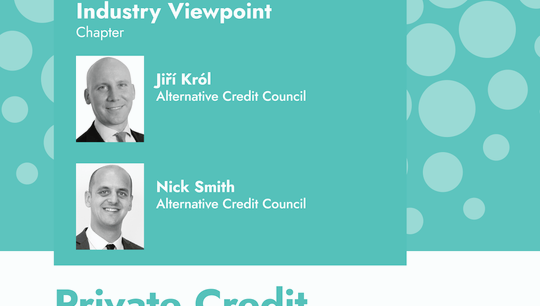ACC Op-ed: If banks are vulnerable, tighten their regulation
Published: 31 October 2025
The IMF’s October 2025 Global Financial Stability Report (GFSR) offers a timely examination of private credit’s growing footprint and its connection to systemic stability. The report rightly points out lingering vulnerabilities in parts of the global banking sector — especially in smaller and mid-sized institutions with weaker governance and risk management frameworks. It also calls for stronger supervision of bank exposures to nonbank financial institutions (NBFIs), including private credit funds. These are sensible and welcome recommendations.
However, the GFSR stops short of recommending the most logical and targeted tools available to supervisors: capital add-ons under Pillar 2, recalibration of credit risk weights, or the use of supervisory stress tests to evaluate exposures to private credit. Despite its stated concern, the report does not suggest tightening the prudential treatment of these exposures within the banking framework. Instead, it shifts the emphasis toward expanding regulation of private credit funds themselves.
Similarly, in her recent speech ESB President Lagarde stated that “policymakers should not wait for another financial crisis to be reminded of how high the stakes are. It is imperative to extend oversight to non-banks involved in bank-like activities, or with significant links to the banking sector – and policymakers must do so sooner rather than later.”
This is where the logic falters. The fact is that all private credit managers are already regulated and supervised in all the major financial jurisdictions by their respective regulators such as the SEC in the US, the FCA in the UK and the AMF and BaFIN in the EU. So when somebody implies these ‘bank-like’ activities need to be overseen or overseen better, they are either unaware of the current state of the regulatory framework, or they are saying that the private credit regulators or regulations aren’t fit for purpose.
Let’s assume the latter is the case. What kinds of regulations should be thought of when thinking of the ‘lightly’ regulated non-bank sector? The implication is always that it somehow has to be the ‘stricter’ rules applicable to banks. But a very cursory look at the structure of private credit industry shows that they already operate with high equity capital, conservative leverage, and strong alignment between assets and liabilities.
They would outperform banks on virtually every Basel metric, were those standards applied. Neither do they benefit from deposit insurance or access to central bank liquidity, and therefore do not require the regulatory scaffolding that accompanies those privileges. You don’t have to take my word for it, As Chernenko et al. (2025) show, when examining real life portfolios of BDCs and similar private credit funds, that they maintain equity cushions of 30–50%, far above what is required of banks. This is the case even in stressed scenarios. There is no regulatory arbitrage here.
So we are told that more regulation is required but not necessarily what that regulation should be as it’s clear that existing banking rules would in no way provide a constraint on the activities of the private credit sector. One possible argument is on the side of transparency. Maybe all we need in terms of additional regulation is better reporting. That way, the central banks and financial stability regulators could better understand the build up of potential risks.
There again, the logic falters. The much worried-over links between banks and credit funds are precisely the place to look to understand what is going on. Credit lines to private credit funds are not blind bets. They are underwritten against diversified, collateralized portfolios of loans or unfunded investor commitments. Banks and their regulators receive detailed data and enforce strict eligibility criteria for their fund financing business. If this process is failing, that is a matter of bank supervisory enforcement — not a justification for recasting the regulatory perimeter for non-banks. In short, if supervisors are concerned about the transmission of stress through bank exposures to private credit, they already have all the transparency and the tools to address it.
Author
Jiří Król, Global Head of the Alternative Credit Council, the private credit affiliate of the Alternative Investment Management Association







